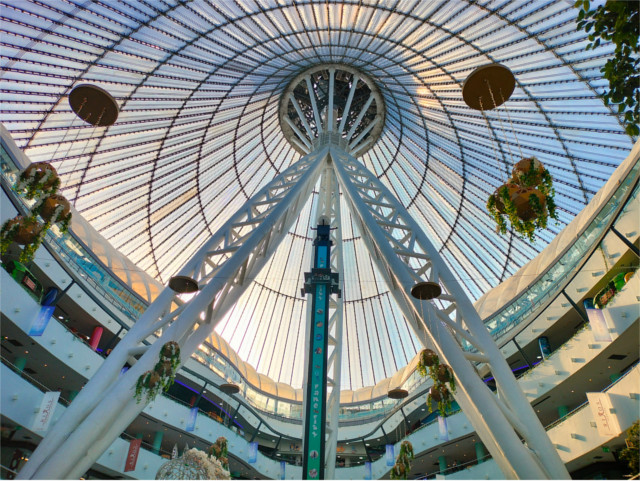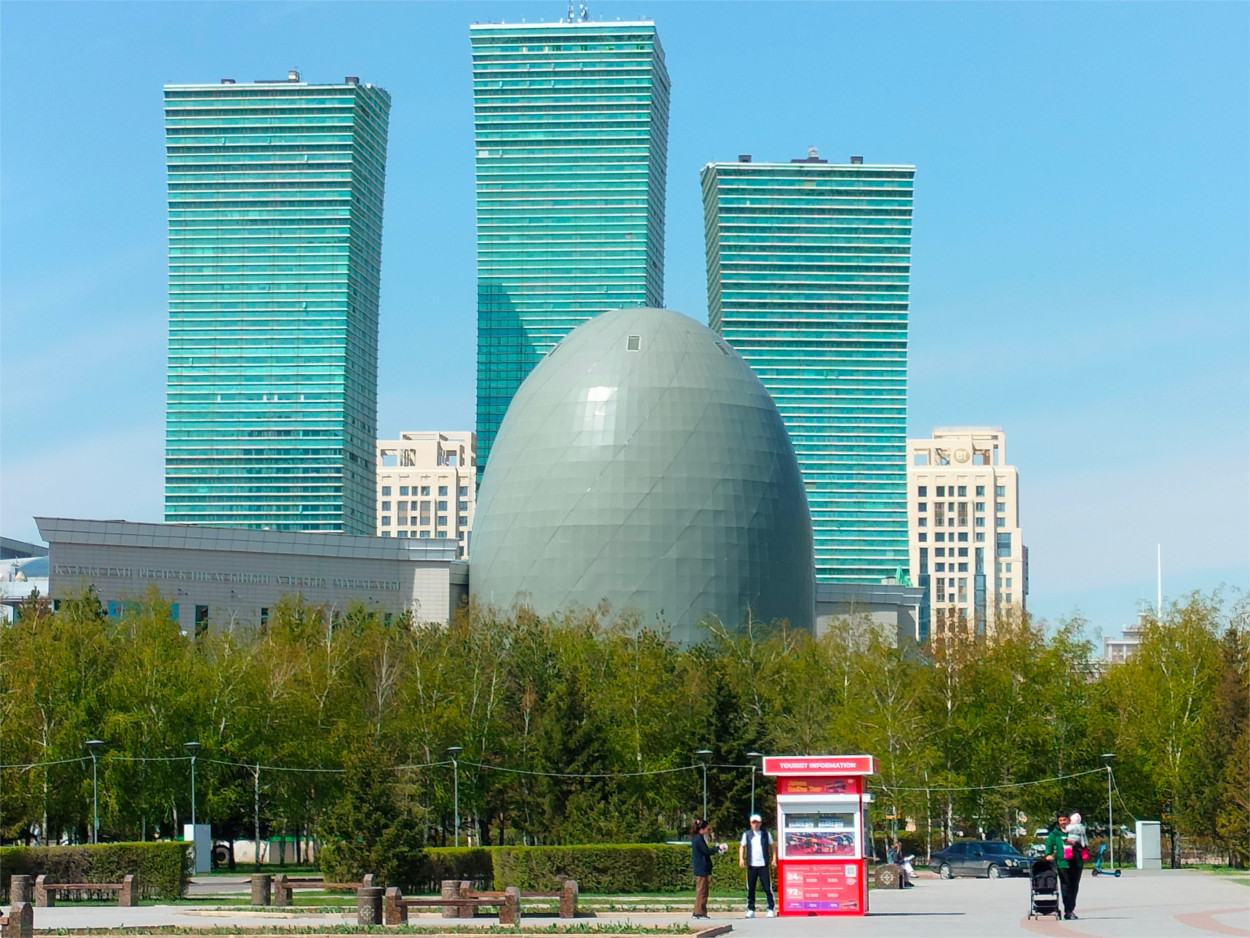Astana is the northernmost capital city in Asia. Locals will proudly tell you that it is the second coldest capital city in the world, after Ulaanbaatar. That was clear from the weather we had in early May. The days were sunny, but cold and windy. Nights were far from warm. I had packed my good winter jacket and a woollen cap when I checked the weather prediction before the trip. They were needed when we walked back from dinners. But apart from such mundane troubles, Astana had stunningly odd architecture. The featured photo shows the egg shaped Kazakh National Archives with the triple towers of an apartment building called The Northern Lights.


My favourite spot was Khan Shatyr, a lovely tent shaped structure a block away from our hotel, designed by Norman Foster. Blocks are long in Astana, so the walk took us about fifteen minutes. But the mall was airy and full of light. Astana has a population of about 1.3 million, and I wouldn’t be surprised if one in thousand were in there on the weekend.


Astana is not an old town. It is said to have been founded in 1830, when it was called Akmolinsk. Later in the Soviet times it was used as one of the Gulags. But modern Astana, on the right bank of the Ishim river, is built to a master plan by Kisho Kurokawa, the Japanese architect. This development followed the move of Kazakhstan’s capital to this city from Almaty in 1997. That’s almost the last time it was renamed. Astana is a Kazakh word which means capital city. It is built like a grandiose capital. The blue-domed pile you see above is the presidential palace, Aq Orda. Tourists can visit, but on the day we had set aside for it, it was off limits. Blue domes are common in Kazakhstan, and we learnt that it is possibly a pre-Islamic symbol of the open sky. The column on the right is the capital of a 91 meter tall column called Kazakh Eli which celebrates the country’s freedom.


From Khan Shatyr, which The Family immediately renamed Khan Market, we saw a strange twinned building with a bridge spanning the wide boulevard below joining the two towers. It turned out that this is the headquarters of the state oil company, KazMunayGaz. Oil is the main reason for Kazakhstan’s prosperity (the newly discovered uranium deposits have not been fully monetized yet), so it stands to reason that this should be such a visible landmark. It visually joins Khan Shatyr to the tower called Bayterek, the two symbols of Astana, and spans the axis of the city. Oh yes, tourists can visit the globe on top of Bayterek, only, it was closed for a month. So we never got to enter the building designed by the country’s founder president, Nursultan Nazarbayev.
Eventually the only monument we visited was the pyramid by Norman Foster. While trying to find a toilet I got locked behind a door which led to parts of the building still under construction. That wasted the half hour until the start of the tour. It turned out that the two of us were the only people taking a tour of the complex. The concert hall was under repairs, there were no exhibitions that we were allowed to see, the lift shuddered alarmingly and opened on to the blue tip where a musty smell told us that the air handling system was out of commission. Part of the guide’s unfriendliness was due to the fact that she didn’t speak a word of English beyond her memorized explanations. The Family said, “But she could have smiled.”



There were other interesting, and somewhat weird, structures we did not stop at. The most notable were the two golden beer cans, the Central Concert Hall, and the largest spherical building in the world, from the EXPO 2017. We drove on to a wonderful Georgian restaurant for lunch. We were the only people there. No one seems to visit Astana, but it has great restaurants and a wonderful mixed population of Kazakhs, Russians, and Germans.

